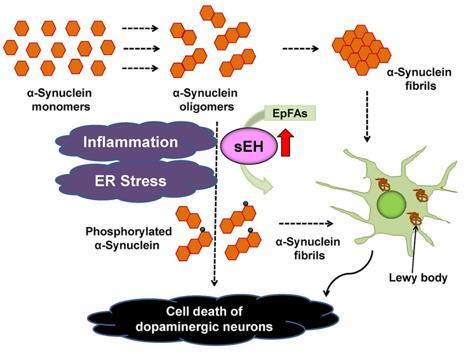What is EPHX2 Protein
The EPHX2 protein, officially known as Epoxide Hydrolase 2, is a crucial enzyme that plays a pivotal role in various biological processes. Also referred to as soluble epoxide hydrolase (sEH), this protein is encoded by the EPHX2 gene. Synonyms for EPHX2 include sEH and EPXH2. Belonging to the epoxide hydrolase family, EPHX2 is recognized for its involvement in the metabolism of various endogenous and exogenous substrates.
EPHX2 Protein Structural Characteristics and Classification
EPHX2 is characterized by its distinctive structure, featuring domains that contribute to its enzymatic activity. The protein's classification places it within the larger family of epoxide hydrolases, which are enzymes involved in the hydrolysis of epoxides—reactive molecules characterized by a three-membered cyclic ether ring.
Recent research advances in the structural analysis of EPHX2 have provided valuable insights into its catalytic mechanism. Understanding the three-dimensional arrangement of its active sites has implications for drug design and therapeutic interventions.
EPHX2 Biological Functions and Molecular Mechanisms
The biological functions of EPHX2 are diverse and impact critical physiological processes. The primary role of EPHX2 is to catalyze the hydrolysis of epoxides, converting them into their corresponding diols. This enzymatic activity is particularly important in the metabolism of lipids, including arachidonic acid-derived epoxides.
The molecular mechanisms underlying EPHX2's functions involve its interaction with various substrates, leading to the breakdown of epoxides and the subsequent generation of biologically active metabolites. EPHX2's involvement in lipid metabolism has implications for inflammation, cardiovascular health, and other regulatory pathways.

Figure 1. Proposed mechanism of the role of sEH in the pathogenesis of PD and DLB. (Hashimoto K, et al., 2019)
EPHX2 Related Signaling Pathway
EPHX2 is intricately connected to various signal pathways, contributing to the orchestration of cellular responses. One notable pathway involves the metabolism of arachidonic acid, a precursor to bioactive lipid mediators. EPHX2's enzymatic activity in converting epoxyeicosatrienoic acids (EETs) into dihydroxyeicosatrienoic acids (DHETs) influences vascular tone and inflammation, thus impacting cardiovascular signaling pathways.
Understanding the signal pathways associated with EPHX2 is crucial for unraveling its role in health and disease. Targeting these pathways may offer novel therapeutic strategies for conditions influenced by EPHX2 dysregulation.
EPHX2 Related Diseases
Research has identified associations between EPHX2 and several diseases, highlighting the enzyme's significance in maintaining health. Dysregulation of EPHX2 activity has been implicated in cardiovascular diseases, such as hypertension and atherosclerosis. Additionally, EPHX2's involvement in inflammation suggests its potential role in inflammatory conditions and autoimmune disorders.
Understanding the link between EPHX2 and disease pathogenesis provides opportunities for the development of targeted therapies aimed at modulating the enzyme's activity and mitigating associated health risks.
EPHX2's Applications in Biomedicine
The unique properties of EPHX2 make it an intriguing target for biomedical applications, with potential implications in diagnostics, vaccine development, and therapeutics.
In diagnostics development, the measurement of EPHX2 levels or activity could serve as a biomarker for certain diseases, providing valuable insights into patient prognosis and response to treatment. Researchers are exploring the utility of EPHX2 as a diagnostic tool in cardiovascular and inflammatory diseases.
In vaccine development, EPHX2 may play a role in the design of vaccines targeting specific diseases associated with its dysregulation. By understanding the enzyme's involvement in disease pathways, vaccines could be tailored to modulate EPHX2 activity and elicit protective immune responses.
In therapeutics, targeting EPHX2 with small molecules or biologics holds promise for conditions where its dysregulation contributes to pathology. Drug development efforts are underway to design compounds that selectively modulate EPHX2 activity, aiming to provide precision medicine approaches for diseases linked to this enzyme.
Recommended Products
| Cat.No. | Product Name | Species | Source (Host) | Tag |
|---|---|---|---|---|
| EPHX2-584H | Recombinant Human EPHX2 Protein, His-tagged | Human | Insect Cell | His |
| EPHX2-638H | Recombinant Human EPHX2 Protein, His-tagged | Human | Insect Cell | His |
| EPHX2-3409H | Recombinant Human EPHX2 Protein, GST-tagged | Human | Wheat Germ | GST |
| EPHX2-297H | Recombinant Human EPHX2 Protein, MYC/DDK-tagged, C13 and N15-labeled | Human | HEK293 | C-Myc/DDK |
| EPHX2-483H | Recombinant Human EPHX2 Protein (1-555 aa), His-SUMO-tagged | Human | E.coli | His/SUMO |
| EPHX2-056H | Recombinant Human EPHX2 Protein, His-tagged | Human | Insect cell | His |
| EPHX2-34H | Recombinant Human EPHX2 Protein, His-tagged | Human | Insect Cell | His |
| EPHX2-3922H | Recombinant Human EPHX2 protein, His-tagged | Human | E.coli | His |
| EPHX2-4386HF | Recombinant Full Length Human EPHX2 Protein, GST-tagged | Human | In Vitro Cell Free System | GST |
| Ephx2-36M | Recombinant Mouse Ephx2 Protein, His-tagged | Mouse | Insect Cell | His |
Reference
- Hashimoto K. Role of soluble epoxide hydrolase in metabolism of PUFAs in psychiatric and neurological disorders. Frontiers in Pharmacology. 2019, 10: 36.

